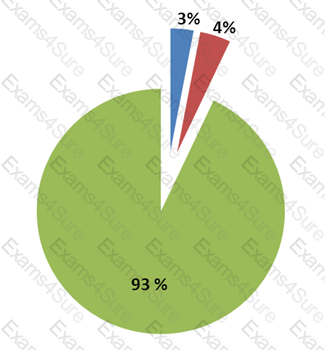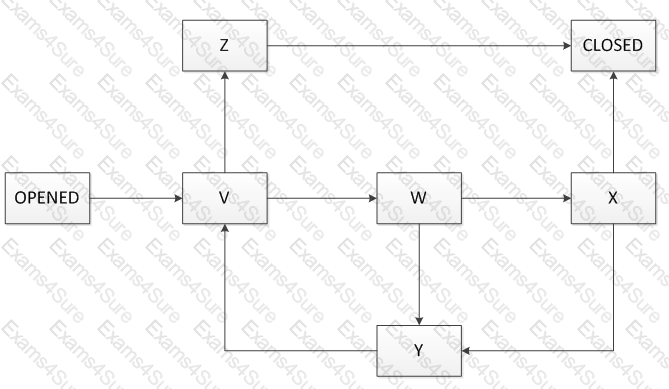ISTQB® Certified Tester Advanced Level - Test Manager [Syllabus 2012]
Last Update 5 days ago
Total Questions : 130
ISTQB® Certified Tester Advanced Level - Test Manager [Syllabus 2012] is stable now with all latest exam questions are added 5 days ago. Incorporating CTAL-TM_Syll2012 practice exam questions into your study plan is more than just a preparation strategy.
By familiarizing yourself with the ISTQB® Certified Tester Advanced Level - Test Manager [Syllabus 2012] exam format, identifying knowledge gaps, applying theoretical knowledge in iSQI practical scenarios, you are setting yourself up for success. CTAL-TM_Syll2012 exam dumps provide a realistic preview, helping you to adapt your preparation strategy accordingly.
CTAL-TM_Syll2012 exam questions often include scenarios and problem-solving exercises that mirror real-world challenges. Working through CTAL-TM_Syll2012 dumps allows you to practice pacing yourself, ensuring that you can complete all ISTQB® Certified Tester Advanced Level - Test Manager [Syllabus 2012] exam questions within the allotted time frame without sacrificing accuracy.
A chart showing the trend in the lag time from defect reporting to resolution during system testing is also available. The chart shows that the daily closure period is consistently and significantly above the rolling closure period for a long period of the system testing phase.
Almost all defects found during system testing have been related to the system as a whole, not related to single units or integrations issues. Almost all quality risks have been addressed during the unit and integration testing phase and no residual quality risks were present in the integrated system. This has been confirmed by exploratory testing sessions performed during system testing, targeted at finding defects in these quality risk areas.
Based on the given information only, which one of the following areas would you expect to be considered more in the retrospective meeting in order to be improved?
Number of correct responses: 1
K3 3 credits
You are following a risk-based testing strategy. The test execution time is very limited. Assume that all the product risk items require more or less the same level of test effort.

Which of the following answers describes the best execution schedule in this scenario?
Number of correct responses: 1
K3 3 credits
After the presentation, you are asked to explain the chart.
Assume you have applied a full risk-based testing strategy.

Which of the following answers would you expect to best describe the pie chart?
Number of correct responses: 1
K4 3 credits
Which of the following statements represents the most effective contribution of the stakeholders to the completion of the failure mode analysis table?

Number of correct responses: 1
K4 3 credits
Defect Management
Which of the following information would you expect to be the most useful to perform a defect clustering analysis?
Number of correct responses: 1
K2 1 credit
Defect Management
Assume you are working on a defect management process to be used by a software organization to track the current status of the defects reports for several projects.
When a defect is found for investigation a defect report is created in “Opened” state that is the unique initial state. The defect report status has also a unique finale state that is the “Closed” state.
The following state transition diagram describes the states of this defect management process:

where only the initial (“Opened”) and final (“Closed”) states are indicated while the remaining states (V, W, X, Y, Z) have yet to be named.
Which of the following assignments would you expect to best complete the defect management process?
Number of correct responses: 1
K3 2 credits
The main objectives the senior management team wants to achieve are:
- to reduce the costs associated with dynamic testing
- to use reviews to ensure that the project is on course for success and following the plan
- to use reviews as a well-documented and effective bug-removal activity following a formal process with well-defined roles
- to determine the effectiveness of reviews in terms of phase containment
- to improve phase containment effectiveness
Which of the following answers would you expect to describe the best way to achieve these objectives?
Number of correct responses: 1
K4 3 credits
Reviews
You are a Test Manager working for a software organization where reviews have never been applied. After a meeting with your managers examining a business case for reviews, (including their costs, benefits, and potential issues), the management finally decides to adopt formal reviews for future projects.
You have been given a budget that you have spent to provide training in the review process and to introduce the review process on a pilot project.
On that pilot project the introduction of reviews has been very positive in terms of positive involvement from all the participants. All the reviews applied to different documents have been very effective for their purposes (especially at revealing defects).
Which of the following answers describes an important success factor for the introduction of formal reviews which is missing in this scenario?
Number of correct responses: 1
K4 3 credits
Test Tools and Automation
Assume you are a Test Manager involved in system testing of a CRM application for a Pay-TV company. Currently the application is able to support a proper number of users assuring the required responsiveness. Since the business is expected to grow, you have been asked to evaluate the ability of the application to grow to support more users while maintaining the same responsiveness.
Which of the following tools would you expect to be the most useful at performing this evaluation?
Number of correct responses: 1
K2 1 credit


TESTED 05 May 2024
Hi this is Romona Kearns from Holland and I would like to tell you that I passed my exam with the use of exams4sure dumps. I got same questions in my exam that I prepared from your test engine software. I will recommend your site to all my friends for sure.
Our all material is important and it will be handy for you. If you have short time for exam so, we are sure with the use of it you will pass it easily with good marks. If you will not pass so, you could feel free to claim your refund. We will give 100% money back guarantee if our customers will not satisfy with our products.